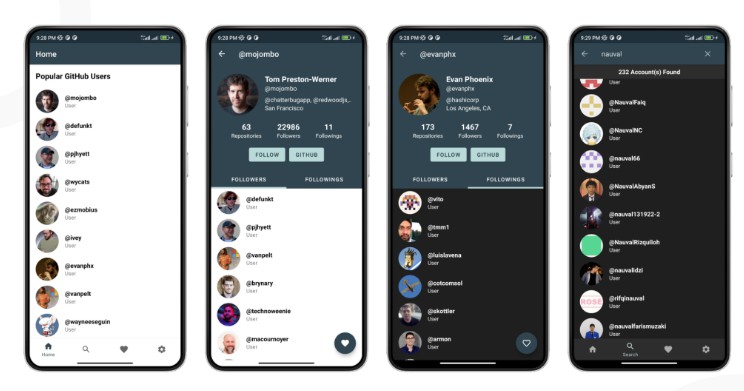Android App Template
This is a GitHub template repository intended to kickstart development on an Android application. This project comes set with a handful of tools that Adam finds important and relevant to every project. If you think something is missing, or feel strongly that a setup should be changed, please submit an Issue.
Walkthrough
If you’d like a video walk through of this template and all it has to offer, you can find that on YouTube.
Using This Template
To use this template in your own project, click the “Use this template” button at the top right of the repository. Once you do, a repository will be created for your account that you can clone and use on your device.
Do note that once you do so, you’ll need to update anywhere TODOREPLACE is referenced. This
includes, but might not be limited to:
- build.gradle for app module.
- AndroidManifest file.
- Strings.xml (for app_name string).
There is an open issue to automate
this process. It is not currently automated, but we have modified to limit the number of changes
and made it easily searchable with TODOREPLACE.
What’s Included
A number of third party dependencies are included in this template. They are also documented inside the documentation folder. The files inside this documentation folder are written in such a way that you can keep them in your real project, to let team members read up on why dependencies are included and how they work.
The dependencies in the template include:
- Ktlint for formatting.
- Detekt for code smells.
- Git Hooks for automatically perform static analysis checks.
- Gradle Versions Plugin for checking all dependencies for new versions.
- GitHub Actions for running continuous integration and ensuring code quality with every PR.
Danger
This template uses Danger which will perform some checks against our
pull requests. You can find the list of checks in the Dangerfile. In addition, we
have a GitHub Actions workflow for Danger checks. In order for that to work, you’ll need a
Danger API key setup in your GitHub secrets. Info on this can be found here.
Templates
There are also templates within this template. This repo comes shipped with a Pull Request Template that will help you and your team write organized and detailed pull request descriptions.
Dependency Setup
You may notice that dependencies are set up in a very specific way. Each of the tools has its own Gradle file in the buildscripts folder. This is by design so that if you chose to have a multi module project, these dependencies can easily be shared between them. This is already configured inside our root build.gradle file, by applying to each sub project:
subprojects {
apply from: "../buildscripts/ktlint.gradle"
apply from: "../buildscripts/detekt.gradle"
apply from: "../buildscripts/versionsplugin.gradle"
}
In addition, there is a versions.gradle file which includes the version numbers of all dependencies used inside the app module. The benefit of moving them here, is that if any dependencies are shared between two modules, we only have to update the version number in one spot. As an added bonus, each dependency version also has a comment linking to the release page, so you can quickly reference to see what’s changed.

